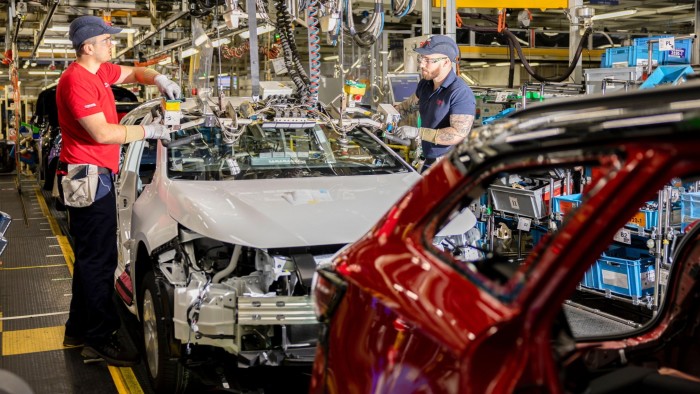Unlock the Editor’s Digest for free
Roula Khalaf, Editor of the FT, selects her favourite stories in this weekly newsletter.
Toyota plans to produce more cars in the UK from next year in a boost to British manufacturing as the group seeks to increase its flexibility to respond to the turmoil caused by US tariffs.
The world’s largest car manufacturer said on Friday that it will shift some production of the GR Corolla high-performance hatchback from Japan to its Burnaston plant in Derbyshire, making it the first plant beyond its home country to produce a GR vehicle.
Toyota did not provide details of the investment size nor the number of vehicles that will be produced.
The investment will help to maintain Toyota’s manufacturing footprint in the UK and comes ahead of the government unveiling its industrial strategy.
UK business secretary Jonathan Reynolds said Toyota’s announcement was “another vote of confidence in our economy and builds on this government’s plans to make Britain the destination of choice for investment”.
The Burnaston plant currently produces about 98,000 vehicles per year and employs about 2,300 people. The people close to the discussions said the investment is unlikely to lead to creation of new jobs.
In an interview in March, Matt Harrison, Toyota’s chief corporate officer in Europe, had indicated that its Burnaston plant could hold more “export potential” if the UK negotiated better trading terms with the US.
Toyota said on Friday the decision reflected its “efforts to optimise its global production footprint to produce and deliver vehicles to customers as swiftly as possible”.
US President Donald Trump’s 25 per cent tariffs on imports of foreign-made cars have forced car manufacturers to redraw their supply chains by raising production in the US and other nations granted lower levy rates.
While preparations for the move to Burnaston predate the tariffs, vehicles produced by Toyota in the UK would benefit from lower tariffs of 10 per cent negotiated by Sir Keir Starmer’s government with US counterparts.
The trade deal will lower US tariffs of 27.5 per cent down to 10 per cent for the first 100,000 cars shipped from the UK. The new quota accounts for almost all of the 101,870 vehicles exported to the US last year.
But car executives say it remains unclear how the quota system would be managed and allocated among different brands, so it is not certain that all of the GR Corolla vehicles that will potentially be exported to the US will be tariffed 10 per cent.
One key reason for boosting production in the UK is to ease the burden on Toyota’s Motomachi plant in Japan, which is struggling to meet high demand for vehicles such as popular hybrid models led by the Prius.
Brexit contributed significantly to dimming the allure of the UK as a hub for Japanese auto companies to export their vehicles into the EU. Burnaston’s output dropped from a peak of 190,000 units in 2015 to less than 100,000 last year.
The future of Burnaston — a key negotiation card for Toyota with the UK government — was boosted by Britain’s decision to allow Prius-style hybrid cars to be sold until 2035 as part of an amendment to the UK’s phasing out of fossil fuel-powered cars.
Toyota has invested more than £2.75bn and employs 3,000 in the UK, including a vehicle engine plant at Deeside in north Wales.


